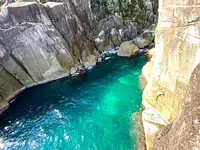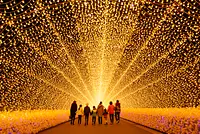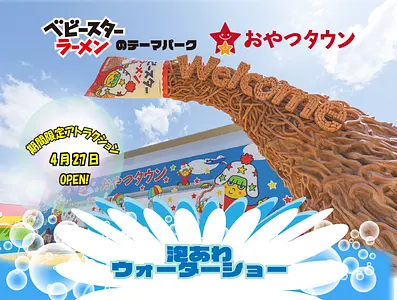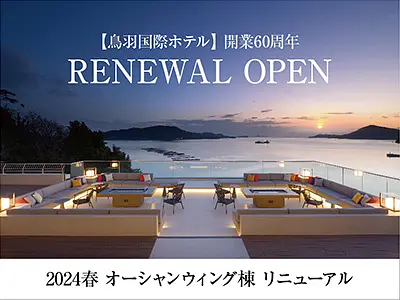[Beautiful Country of Mie Bicycle Route: Taki Edition] Cycling to visit local delicacies in little-known spots that don't often appear in tourist guides
掲載日:2020.03.16
In this project, bicycle writer Masanori Asano, who was born and raised in Mie Prefecture, introduces the charms of Mie Prefecture by bicycle. This time, the 10th time, we went to TakiTown, located in the central part of Mie Prefecture, and ran through the mountain village where tea plantations spread out, visited spots with a sense of history, and enjoyed local cuisine and exquisite sweets made with locally produced ingredients. Ta.
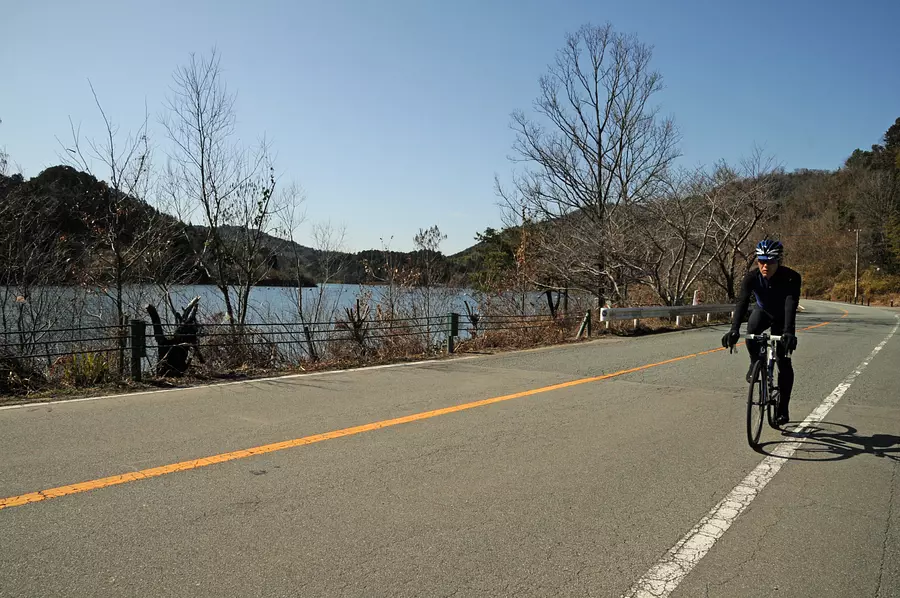
TakiTown in central Mie Prefecture is a place rich in nature, located in the basin of two of Japan's clearest rivers, the Miyagawa River and the Kushida River. The area is dotted with spots that give you a sense of history, such as niu Daishi and Kinhasedera Temple, and if you go a little further you can visit Kumano Kodo and Oni Pass. There are also plenty of local gourmet spots, such as local cuisine prepared by local women, sweets made with eggs produced in this naturally rich area, and the famous mochi mochi along the highway, which has long been loved by locals and travelers alike. !
While connecting these points, I tried to come up with a course that has little traffic, moderate ups and downs, and is perfect for cycling!
[This time's top image: GokatsuraLake (TakiTown)]
■Traveler bicycle writer Masanori Asano
I have been cycling for about 20 years. I love cycling as much as I love three meals and snacks. Because of his love for bicycles, he became a freelance bicycle writer. He rides his bicycle for work, and also enjoys racing and long rides in his private life.
ーーーーーーーーーーーー
What is “Beautiful Country Mie Bicycle Route Diary”? Bicycle writer Masanori Asano, born and raised in Mie Prefecture, will introduce you to the charms of Mie Prefecture while cycling!
Click here for other articles on the “Beautiful Country of Mie Bicycle Route”!
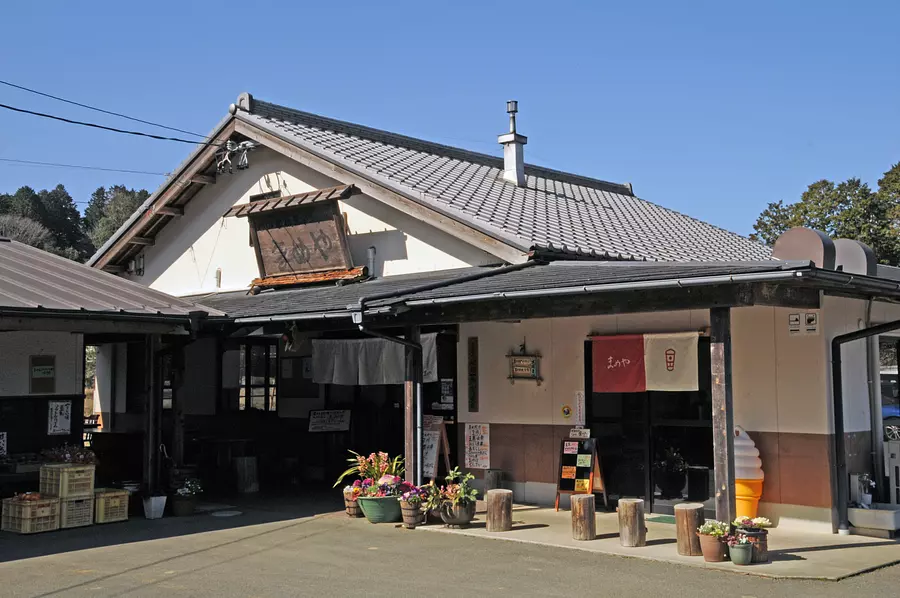
■ Taste local cuisine and stroll around the temple town with niu Daishi
◆ Mameya
This time, the setting is the inland areas of central Mie Prefecture TakiTown, WataraiTown Town, and OdaiTown. I chose a shop called ``Mameya'' near the temple town of niu Daishi as my base. You will be able to use the parking lot on the premise of using the store! (If you are coming in a large group, please consider carpooling.)
On this day, I wanted to find a course that Mr. Murakami, who is in charge of this series for Bicycle Beginners, would also be able to ride, so I was thinking of a course with relatively few climbs, but Mr. Murakami was unable to come due to work commitments. Today, I will be riding alone carrying my equipment.
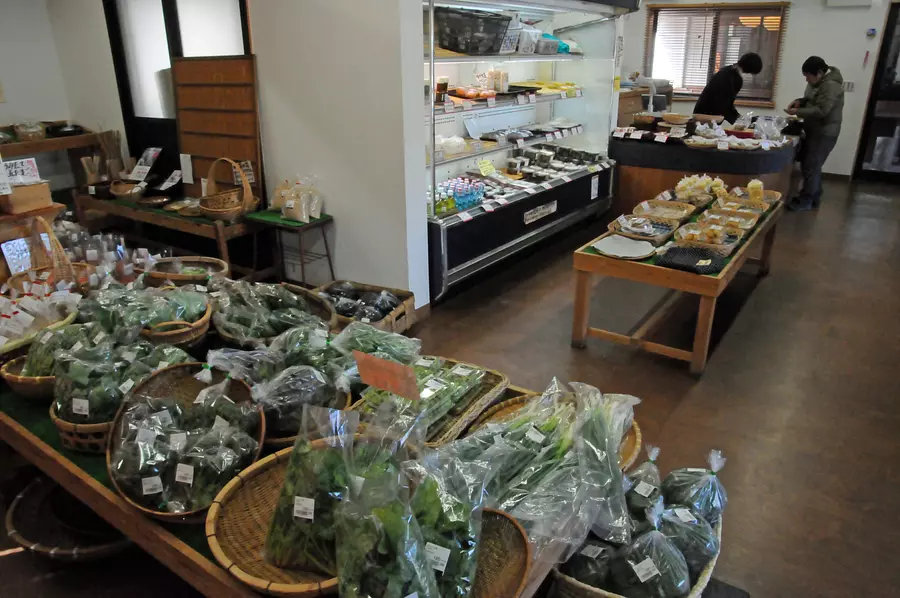
Mameya's signboard says ``Momma's shop.'' This is because there is a restaurant where you can enjoy a buffet of local cuisine made by local women using local ingredients. There is also a special agricultural product store where you can enjoy local vegetables at reasonable prices.
Normally, I would enjoy a feast from my travels as a reward for my ride, but according to advance information from the shop owner, ``The buffet of local cuisine is very popular, and as time passes since the shop opened, some of the dishes may become less available. We recommend that you arrive early, as there may be some delays."
First, let's replenish our energy and then enjoy the ride at a leisurely pace!
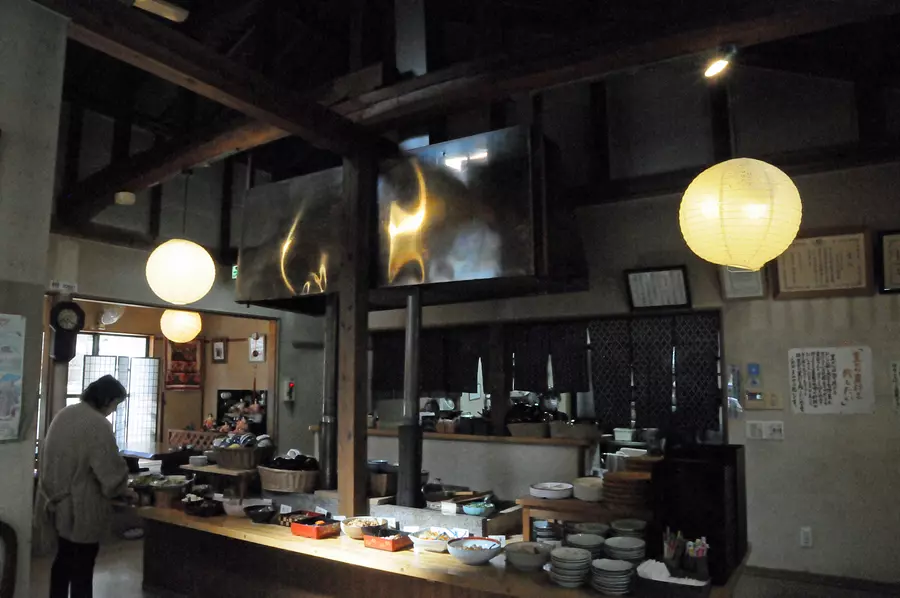
I immediately went through the curtain and headed to the dining room. The inside of the store is filled with the warm and gentle scent of home-cooked food, giving you a nostalgic feeling that makes you feel like you're back at home.
The shelves lined with buffet dishes include dishes made with soybeans, from which the restaurant's name comes from, and dishes made with local vegetables. According to Tetsuya Kitagawa, a staff member at Mameya, there are 25 to 30 types of dishes lined up every day. The dishes change daily, and on this day, in addition to dishes made with beans and locally grown vegetables, there was also freshly grilled miso dengaku, handmade tofu, and boar soup.
Soybean production is popular in this area, and there are even varieties that are native to this area. Nowadays, the number of farmers who produce native soybeans has decreased, but at this restaurant you can enjoy such valuable native soybeans.
“The native soybeans have larger grains, sweetness, and a better texture than regular soybeans.We serve them as gomokuni or roasted beans, but they are rare because they can't be tasted outside of town.”
said Mr. Kitagawa. You must try this!
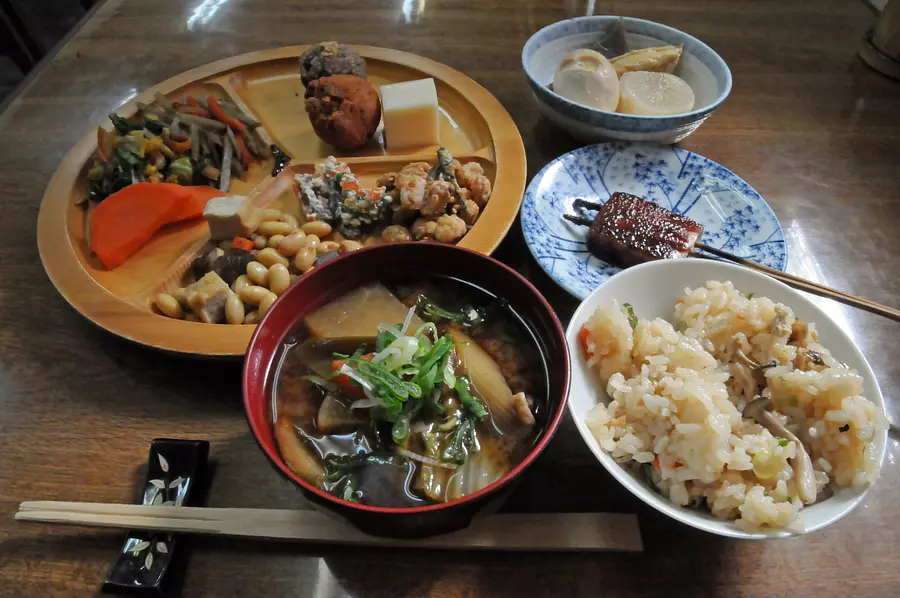
I tried to arrange various things that I wanted to eat!
In addition to gomokuni, fried beans, simmered carrots, kinpira burdock, nut, oden, miso dengaku, flavored rice, and boar soup, we also have desserts such as okara donuts, five-grain rice ohagi, and soy milk agar! It's mainly made with vegetables, contains plenty of soy protein, and has a good nutritional balance, so it's perfect not only for health-conscious women, but also for endurance athletes who are serious about weight management!
The seasoning had the simplicity and gentleness typical of local cuisine, and it was truly flavorful and unpretentious. By eating seasonal food that is locally produced for local consumption, you can feel the strong flavor of the ingredients, and also feel the love of the mothers who make them. It was so delicious that I ended up eating until I was full even before I ran (lol).
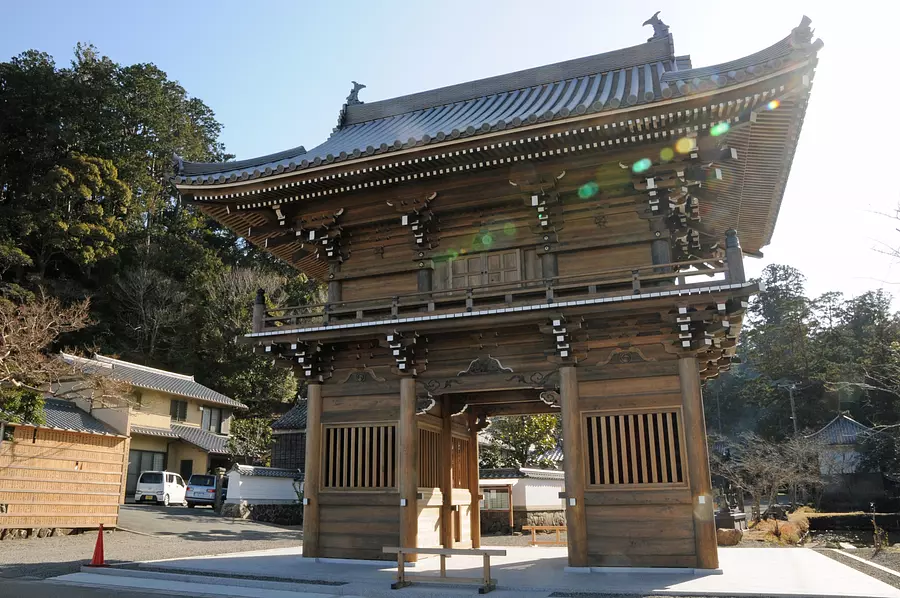
◆ niu Daishi
You will leave the store with a satisfied stomach and soul. It's hard to run hard all of a sudden, so first try running around niu Daishi and its temple town as if you were just taking a walk.
A few hundred meters after leaving the store, a large Sanmon gate will appear on your right. This is niu Daishi.
niu Daishi is officially called ``Female Koya NyuzanJingujiTemple Jojuin'' and was founded in 774. It is said that Kobo Daishi stopped by this area in 813 and built the Shichido Garan. It is called ``Women's Koya'' because while Koyasan, which was founded by Kobo Daishi, was a place where women were not allowed, niu Daishi allowed women to worship there.
The magnificent Sanmon Gate tells us that niu once prospered as one of the nation's leading mercury producing areas. niu 's mercury was also used in the Great Buddha of Todaiji Temple, and it is said that `` niu 's 1,000 ordinary households accounted for the economy, making it as rich as private houses.'' (Seiyo Zakki).
NyuzanJingujiTemple (niu Daishi)
0598-49-3001
Yes
〇From JR/Kintetsu Matsusaka Station, take the Matsusaka Oishi Line for about 23 minutes and get off at "Shawa", then walk 5 minutes to oka 1 Ward, then transfer to the town bus (weekdays only) from oka 1 Ward and get off at niu Daishi-mae for about 20 minutes.
〇40 minutes by town bus (weekdays only) from JR Taki Station
*Please use Denta on Saturdays, Sundays, and holidays.
☆Information about TakiTown Municipal Bus☆
・Town bus
・About TakiTown vehicle map
・About 10 minutes by car from Ise Expressway "Sewataki IC"
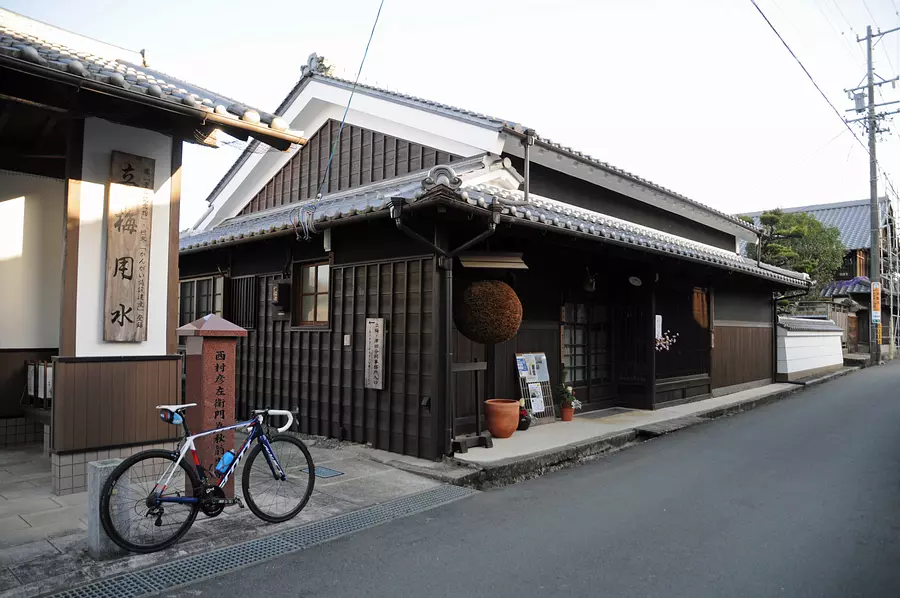
If you head west along the road in front of the Sanmon Gate, you will find the Monzen town of niu, which will eventually merge with the former Wakayama Highway. There are some gabled houses with lattice doors remaining in this area, but there are few things that remind us of the past.
However, the atmosphere of the Showa era still remains in the townscape, and it brings back memories of strolling through the back alleys when I was an elementary school student.
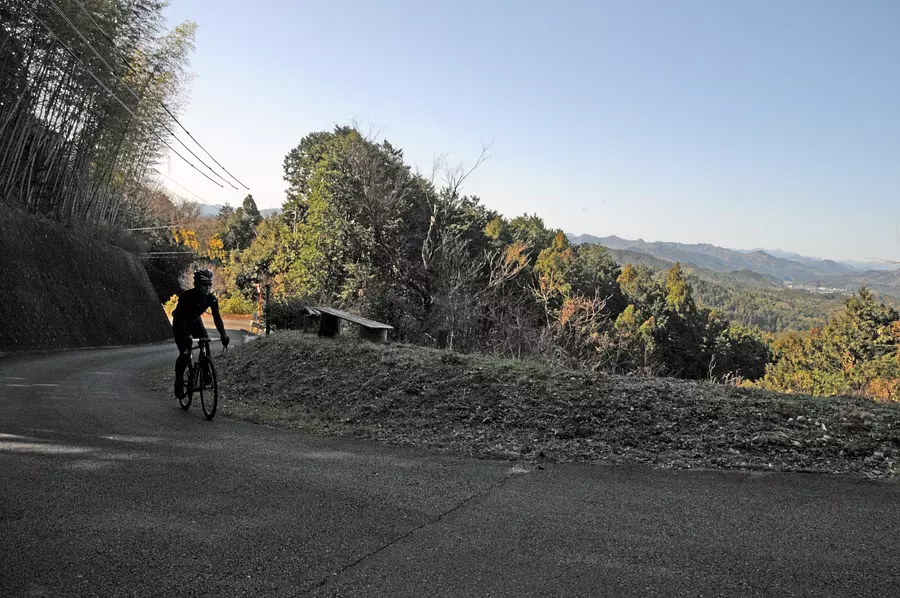
■ Visit an ancient temple on the mountain and go to the banks of GokatsuraLake where there is a restaurant for high school students
◆ Kinchokokuji Temple
Next, we will head to Kinhasedera Temple, which is located on top of Shiroyama. As you head north on Prefectural Route 421, which runs north-south in front of niu Daishi, and pass through the village, your view will suddenly open up and you will see a rural landscape spread out in front of you.
Turn right at the intersection with Prefectural Route 702 and continue east. From here on, there is a gentle slope followed by a steep slope for about 2km. The slope is particularly steep for about 1km from where you turn left following the signs for Kinhasedera Temple. We still have a long way to go, so let's shift to a lighter gear as soon as possible and climb up while spinning our legs.
On the way up to Kinhasedera Temple, there is a good vantage point on the left. This is a reward that only those who make it to the top can enjoy!
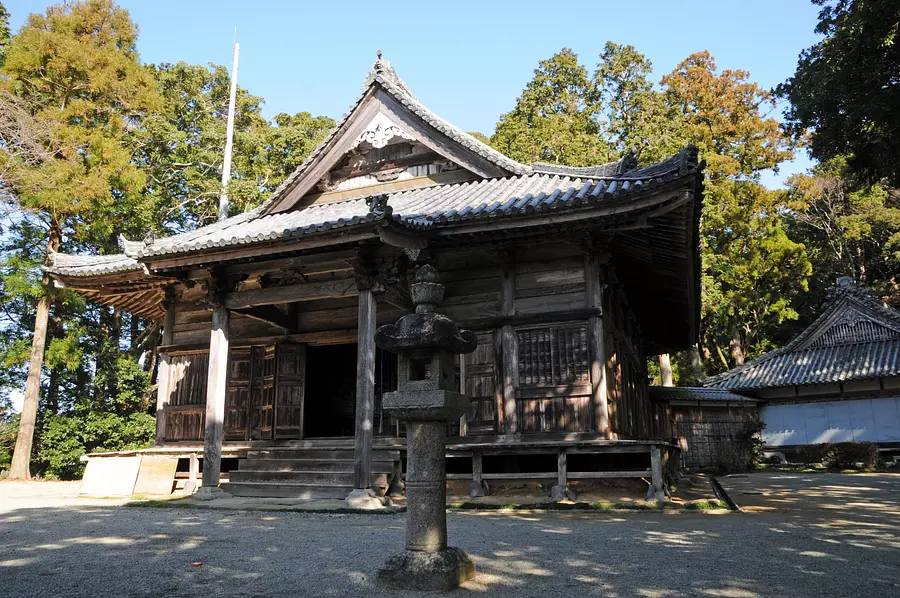
There is a parking lot at the top of the mountain, and there is a promenade leading to Kinhasedera Temple. If you want to visit the shrine, park your bicycle and walk. The approach path is quite steep and difficult to walk in road bike binding shoes, so it's helpful to wear light, easy-to-walk shoes like barefoot shoes.
After climbing up the mountain path for a few hundred meters, the main hall of Kinhasedera Temple will appear in front of you. It is a magnificent wooden hall.
Kinhasedera Temple is a temple of the Yamashina sect of Shingon Buddhism that was founded in 885 by the powerful clans of Ise Province, and is officially called niu Kinhasedera Temple. The principal image is a 6.6m tall eleven-faced Kannon statue that is designated as a nationally designated cultural property.
Let's pray for safety on the road and get back to cycling.
Kinhasedera Temple
0598-49-3001
200円
Admission: Sundays, 18th of every month, three days of New Year's Day (reservation required)
(9:30~15:30)
・About 50 minutes on foot from JR Kisei Main Line "Sana Station"
・From JR/Kintetsu Matsusaka Station, take the bus bound for Misetani for 26 minutes and get off at Maemura. Approximately 60 minutes on foot.
・About 15 minutes by car from Ise Expressway "Sewataki IC"
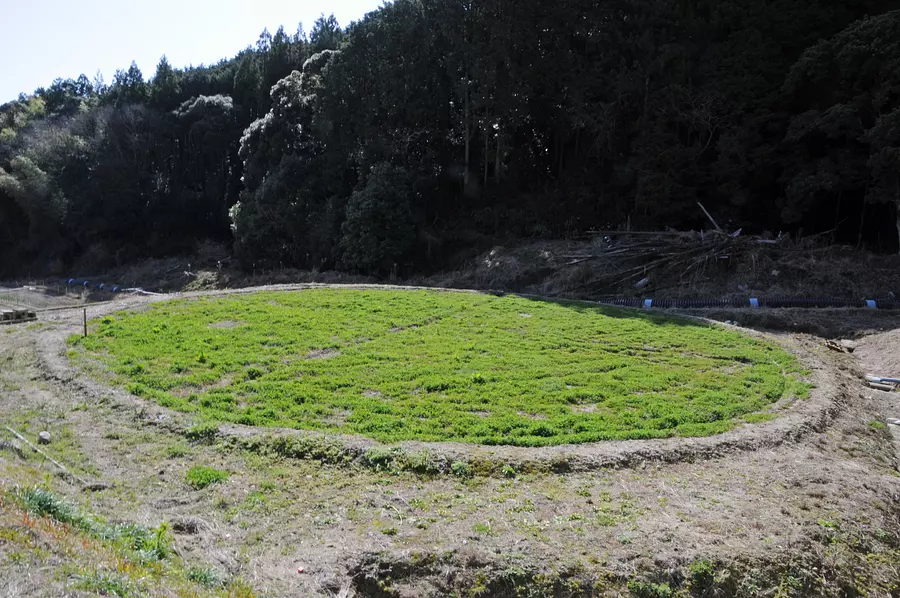
◆ Kurumada in Hase
We descended Shiroyama, which we had struggled to climb earlier, all at once. It's really exhilarating because you can get up to speed without having to drive, but there are many sharp curves with poor visibility, so please drive safely!
When you descend to the village of Hase at the foot of the mountain, a circular rice field will appear in front of you. This is Kurumada from Hase. This rice field was created in 1998 by the local community revitalization group Ichihachi-kai in order to "pass on the landscape of our hometown, the importance of agriculture, and the culture of rice cultivation to future generations." It is said to have a radius of 11 meters, in honor of the eleven-faced Kannon that is enshrined at Kinhasedera Temple.
Every year, a rice planting festival is held in May and a harvest festival is held in September, and it is a famous place that many photographers visit on the day of the festival, but it was buried by a debris flow caused by Typhoon No. 21 in 2017, and the festival has not been held since then. It seems that it has been discontinued. On the day of our interview, thanks to the efforts of local people, Kurumada's characteristic circular exterior was revealed. It seems that they are aiming to restart the rice planting festival and harvest festival in 2021, so I definitely want to go see it at that time.
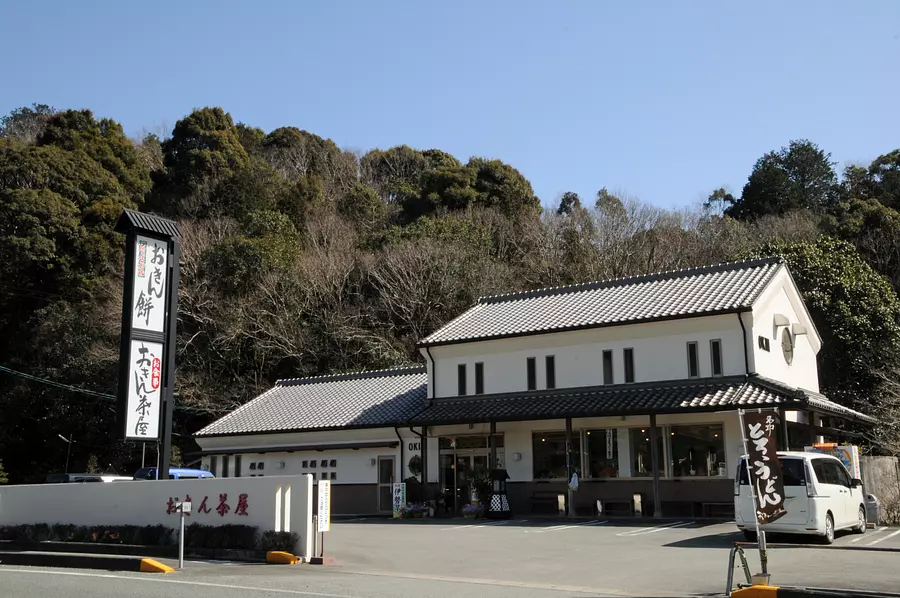
After leaving the village of Hase, I headed back to Prefectural Route 702. Follow this road towards National Route 42. The roads in this area are wide and there isn't much traffic, so you can drive comfortably.
When you cross the JR Kisei Main Line railroad crossing, National Route 42 will appear in front of you. There is Kin Chaya across the road.
Speaking of Okinjaya, the specialty is `` Okin-Mochi'', which is the origin of the store's name. In the past, there was a tea house in this area that entertained visitors to both IseJingu Grand Shrine and its Betsugu Takihara Shrine, and it is said that the mugwort mochi that was made by an old lady named Okin with all her heart was the origin of Okin-Mochi.
The mochi is soft and has a strong aroma of mugwort, with sweet red bean paste inside, and the rustic taste leaves a lasting impression! The minimum unit sold is 5 pieces, but since they are individually wrapped, they can also be used as supplementary meals while cycling!
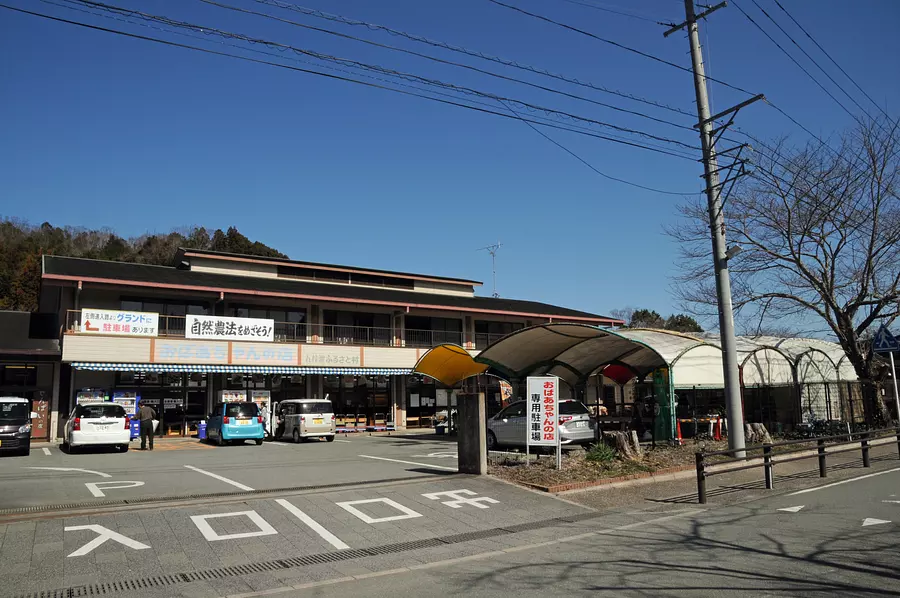
◆ GokatsuraLake / GokatsuraLake Furusato Village
Depart Okinjaya and head north on National Route 42. Go over one small hill and turn right at the first traffic light intersection. After that, if you continue along the road, you will see GokatsuraLake on your right (see the first photo!).
If you drive along the road along the pond with GokatsuraLake on your right, GokatsuraLake Furusato Village will eventually appear on your left.
Here you can find the ``Mago no Tavern'' run oka Ouka high school students, which was the model for the drama ``High School Student MagonomiseRestaurant'' and a zoo.
Although MagonomiseRestaurant was closed on the day of our interview, it is said to be so popular that customers come from outside the prefecture on business days. Actually, I haven't been there yet, so I would like to visit on a business day next time.
Gokatsura Pond Furusato Village
0598-67-6196
◆One lodge for one night (14:00-10:00)
Accommodation from 4,500 yen
Meeting/break 1,500 yen~
*Additional charges may apply depending on the number of people and number of days, so please contact us for details.
◆Furusatomura Animal Park
Adults (junior high school students and above): 900 yen
Children (ages 4 and up up to elementary school age): 500 yen
◆Barbecue stove starts from 3,000 yen, empty-handed barbecue set (4 servings) starts from 12,000 yen
Furusatomura Animal Park (Closed, scheduled to reopen in summer 2024)
Marche Grandma Kitchen, closed every Tuesday
Yes 400 units
20 minutes walk from Sana Station on the JR Kisei Main Line
16 minutes by bus bound for VISON from JR Taki Station to GokatsuraLake Pond Furusato Village.
7 minutes by car east from Ise Expressway Sewataki IC
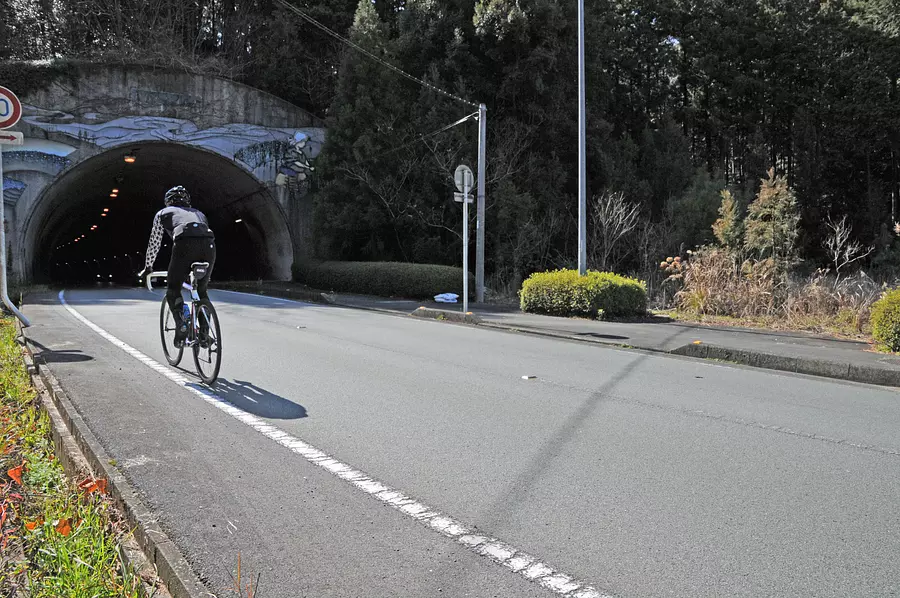
◆ Meki Pass
Proceed east through GokatsuraLake Furusato Village and turn right at the T-junction onto Prefectural Route 119. A gentle uphill slope will appear, and at the top there will be a tunnel. Shinjo Oni Tunnel.
On the east side of this tunnel is the Oni Pass of the Kumano Kodo, and it is probably named after that. Travelers in the past would cross the Meoni Pass on foot to reach the sacred place of Kumano, but as a modern traveler, I continue on by bicycle through the Shinmeoni Tunnel.
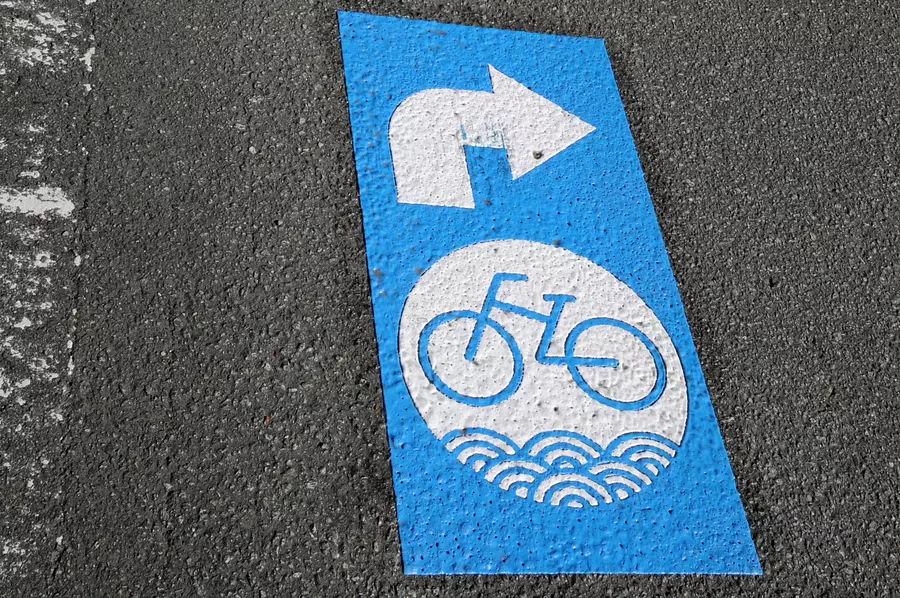
■ Ride along Japan's clearest stream on the Pacific Coast Bicycle Path and enjoy delicious egg sweets!
◆ Pacific Coast Bicycle Path
After passing through the Shinmeoni Tunnel, the road continues for a while with ups and downs through a rural area filled with tea plantations. When you turn right at the first traffic light, you will see a sign mark with a blue sea wave and a bicycle motif and an arrow feather drawn on the road! Unexpectedly, I ended up riding the Pacific Coast Bicycle Path!
The Pacific Coast Bicycle Route is a large-scale bicycle route with a total length of 1,400 km that connects Chiba and Wakayama prefectures, passing through six prefectures: Kanagawa, Shizuoka, Aichi, and Mie.
Within Mie Prefecture, there is a coastal route from TobaCity to Higashikishu via ShimaCity and MinamiiseTown, and an inland route from TobaCity to HigashiKishu via IseCity HigashiKishu WataraiTown, TaikiTown, etc. The arrow feathers and the sign marking the Pacific Coast Bicycle Route are painted on the course.
Personally, I feel that they chose a place that is easy to run and has a nice view! I would like to run the entire line in Mie Prefecture in the near future!
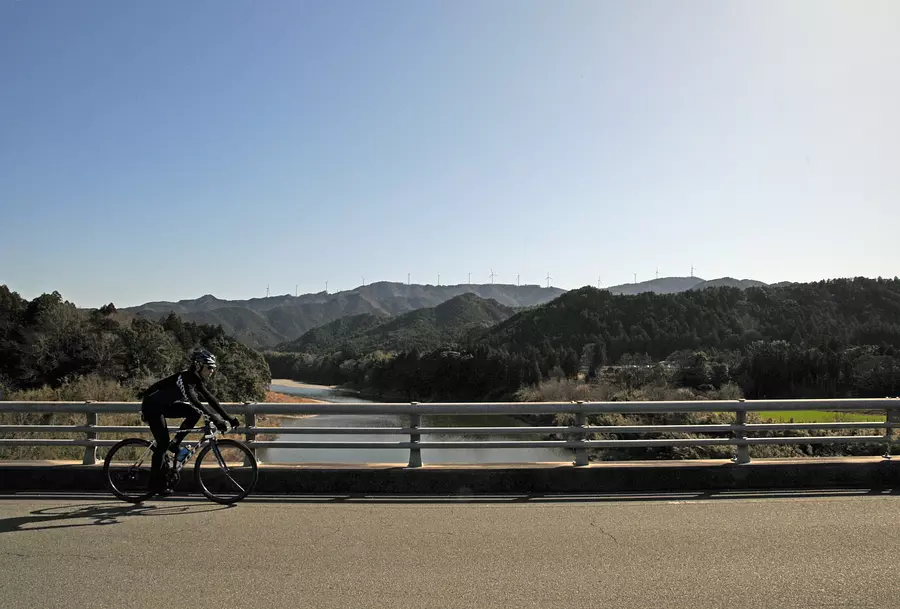
My favorite scenery on this course is the view from the bridge over the Miyagawa River just after entering the Pacific Coast Bicycle Path.
You can see Mt. Shishigadake across the Miyagawa River, and there are many windmills that generate wind power. The Miyagawa River in this area is wide and has a slow flow, which I feel fits perfectly with the peaceful atmosphere of this area. Although it is not listed in the guidebook, it is one of my personally recommended scenery!
From here, I will be riding along the Pacific Coast Bicycle Path for a while. There are quite a few ups and downs, but once you pass the village of Makae, there are no traffic lights and the traffic is light. It's a perfect route for cycling as you can ride comfortably at your own pace. After driving for about 6km, you will come to a signalized intersection called Nohara, but there are no signals until this point.
Turn right at the Nohara intersection, cross the Miyagawa River and follow the road, then take Prefectural Route 709 to National Route 42. Head north on the national highway for a while. There isn't a lot of traffic in this section either, but compared to the areas I've been on so far, there are more large vehicles coming and going, so be careful.
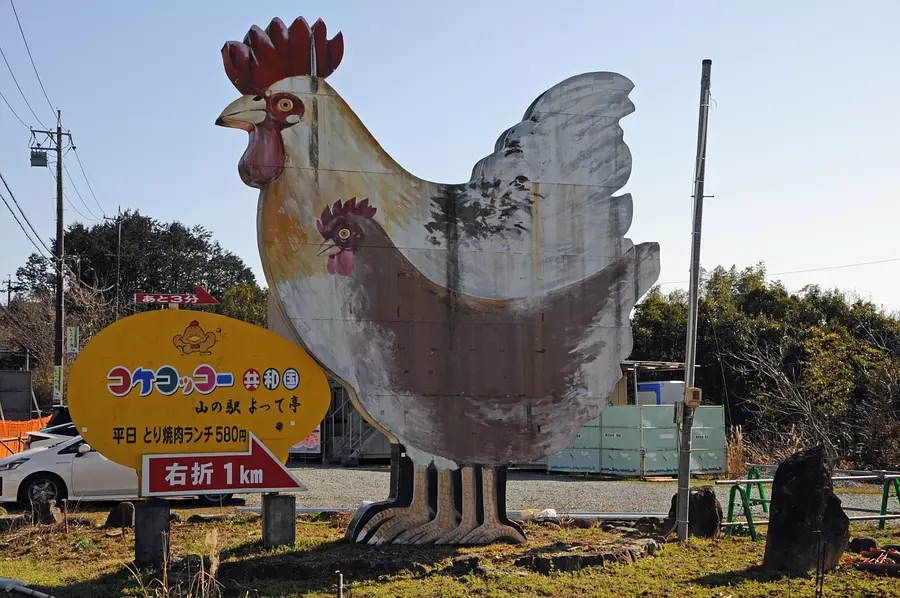
◆ Kokekokko Republic
After driving about 2km on National Route 42, you will see a large chicken sign on your right. Once you've come this far, your next destination, the Kokekokko Republic, is nearby. You can get to your destination without getting lost if you follow the guide signs, but it's a bit of an uphill climb, so go at your own pace!
Kokekokko Republic is a facility that produces and sells cage-free fertilized eggs, chicken eggs, and processed chicken products. In addition to eating freshly laid eggs, there is also a direct sales store called ``Yamateki Yotte-tei'' where you can eat and purchase dishes and sweets made with these eggs.
Our destination this time is of course Yottei!
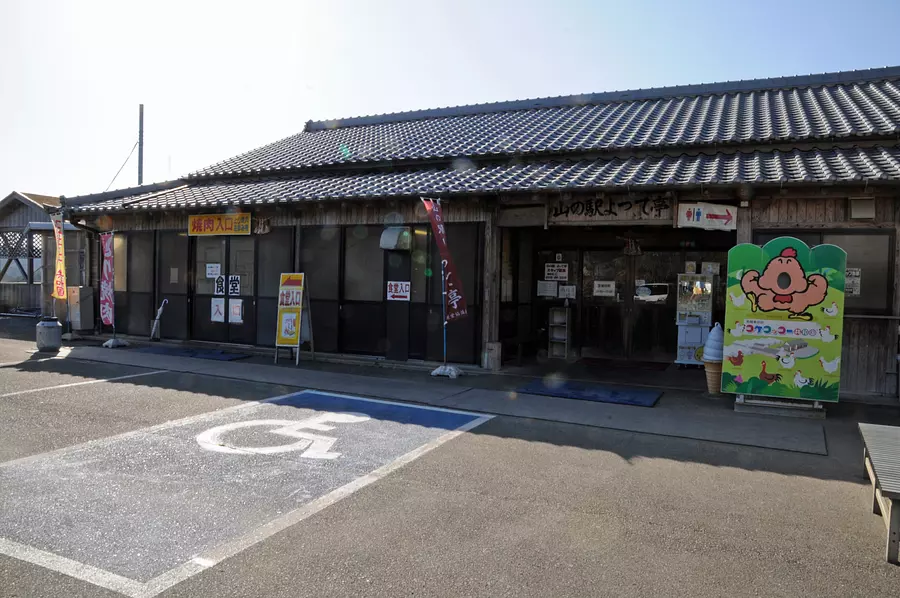
As you walk up the hill with the chicken house on your left and the Ise Expressway on your right, you will eventually see the Yama-Eki-Yatei-tei on your left. There is a cycle rack in front of the shop where you can safely park your road bike.
"Welcome!"
As I was parking my bike, the store manager, Mitsuo Somekawa, who happened to be outside, called out to me.
“We also welcome cyclists! Lately, we have seen an increase in the number of customers who stop by on their way to cycling, and we had a customer on a road bike just a little while ago.”
This makes me happy!
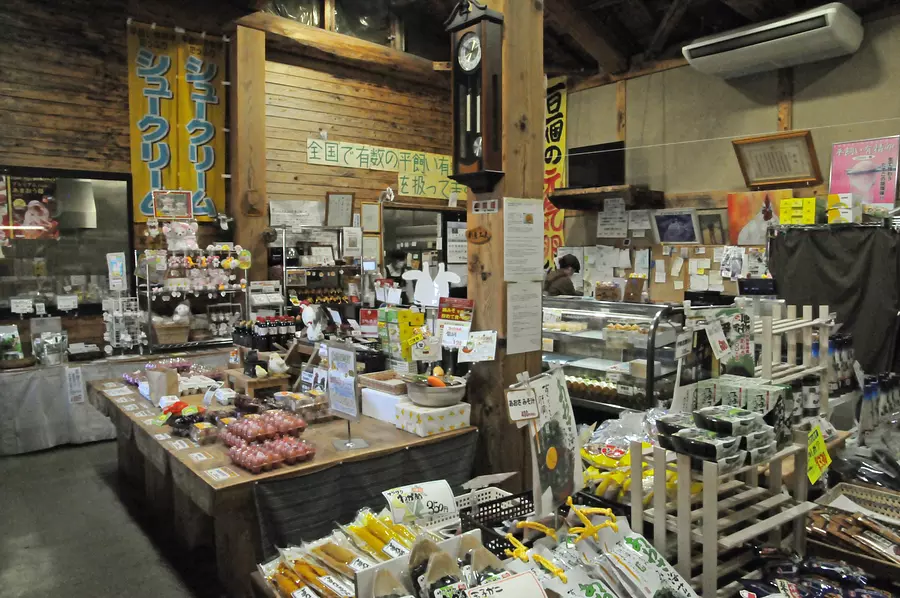
Let's go to the store right away.
The store is lined with Kokekokko Republic's signature products, free-range fertilized eggs, sweets such as castella, foods such as minced chicken and charcoal-grilled chicken, and soy sauce for mayonnaise and egg-cooked rice. . There is also a cafeteria next door, where you can enjoy rice dishes such as egg-fried rice and chicken yakiniku, as well as sweets such as cream puffs and pudding.
“Kokekokko Republic chickens are raised using a free-range method that takes advantage of the vast land.They are raised in a more natural environment with less stress, making them suitable for producing healthy and delicious eggs and meat. There is.”
said Mr. Somekawa.
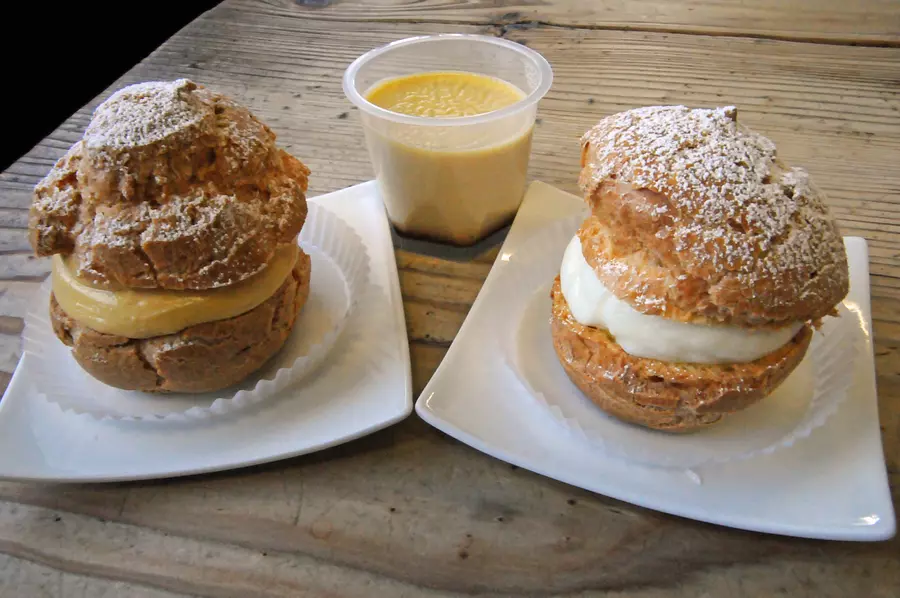
Since it's time for a snack, I decided to have some sweets made with eggs! Recommended items are the special pudding and cream puffs. All of them are handmade in the shop, and the cream puffs are filled with cream after receiving an order.
I decided to have both pudding and cream puffs, but I found out that there are two types of cream puffs: custard cream and limited quantity whash!
As I was seriously thinking about which one to choose, Mr. Somekawa whispered to me, ``Please try both!''... Well, I've been running a lot today, so I guess it's okay to eat two cream puffs, so I resisted the temptation and decided to have pudding and two cream puffs.
Pudding is a type with a firm and elastic texture. The flavor of the egg is very rich, and even though it is simple, the goodness of the egg itself comes to the fore. Combined with the sweetness and bitterness of the caramel sauce, it has a delicious taste that leaves you wanting.
Cream puffs are made from an egg white base. It has a light taste and is not too sweet, rather refreshing, but the presence of the egg stands out. On the other hand, with custard, you can fully enjoy the richness of the eggs. Although it is richer than Howash, it is not overly rich and is less sweet.
I have a sweet tooth, so I can easily eat two!
Kokekokko Republic Mountain Station Yottei
0598-49-3517
10:00~17:00
2nd Tuesday
can be
Approximately 3 minutes from Ise Expressway "Sewataki IC"
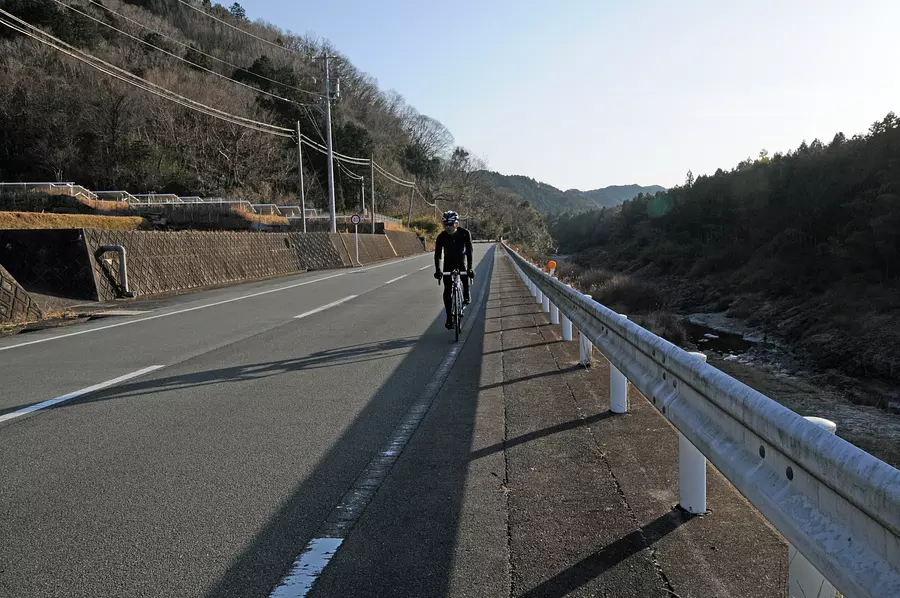
Enjoy delicious sweets and satisfy both your stomach and heart! I also like chicken, so I left the restaurant with a promise to myself, ``Next time, I'll come back for chicken yakiniku at lunchtime.''
Today was another fun cycling day. Afterwards, enjoy the delicious food and the afterglow of your trip as you drive safely back to the starting point.Article creation/Mashinori Asano
| Category | |
|---|---|
| season | |
| area |
